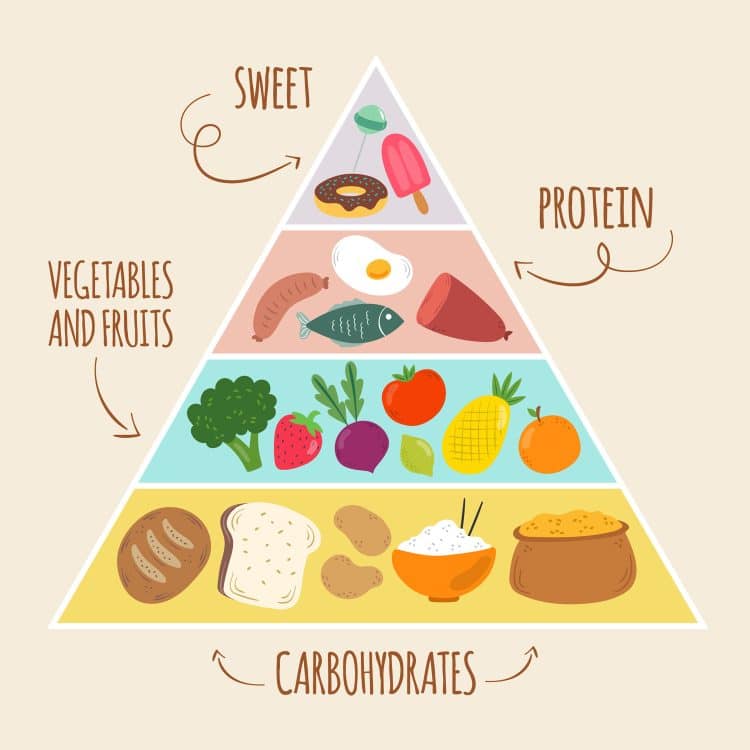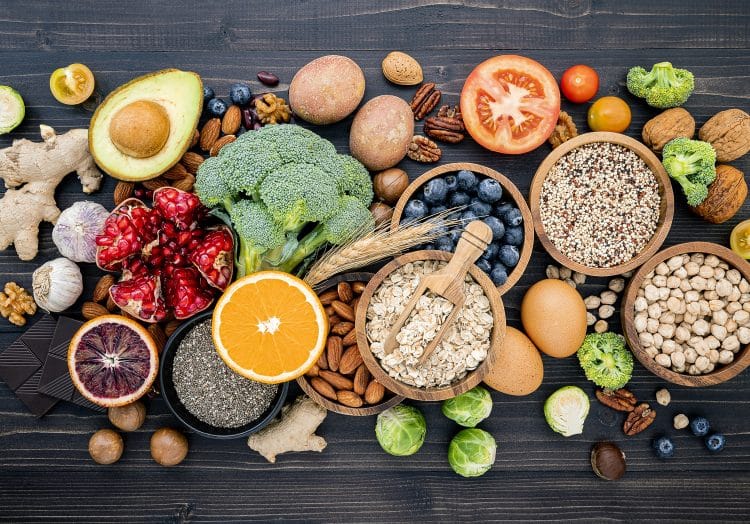No, you don’t have to be flexible enough to do a full split to qualify for a flexible dieting plan. It’s indeed a great dieting plan for people who are not that flexible but want to get in shape.
The word diet can induce dread and despair like no other. Gastronomes can feel their stomachs turn inside out at the thought of cutting out their favorite dishes from their diet. “I would be in perfect shape if I didn’t have to restrict my food choices” is what they say after gulping down a donut.
“You become what you eat” is what they say in the fitness circles, but most of us don’t want to be chickens, or do we? Dieting is arguably the roughest part of physique transformation. It can sometimes get so bad that you can see tears of joy trickling down a bodybuilder’s face as they feast on their favorite cheat meal after dieting for weeks on end.
The question here is, does it have to be this way?
Following the orthodox dieting jargons and categorizing food into good and bad, clean and cheat can lead to the following problems:
- Labeling food as “junk” gives them a negative connotation and creates a negative relationship with food.
- Not eating your favorite food for long periods can cause cravings.
- Cheat meals after a long time usually results in overeating.
- Calling food forbidden doesn’t always get the desired results – Adam and Eve would agree.
- Cheat meals aren’t precisely cheating if you plan for them in your diet program – which you should if you’re working on a transformation.
- Even while eating your favorite forbidden meals, you will not enjoy them because the little Satan on your shoulder will keep shouting “junk food” in your ears.
What is Flexible Dieting?
Flexible dieting, aka IIFYM (If It Fits Your Macros), aka Counting Macros, is simply counting and tracking of macronutrients (protein, carbohydrates, and fat) to achieve a body composition goal.
Level Up Your Fitness: Join our 💪 strong community in Fitness Volt Newsletter. Get daily inspiration, expert-backed workouts, nutrition tips, the latest in strength sports, and the support you need to reach your goals. Subscribe for free!
To put it simply, in an IIFYM diet, you don’t discriminate between a burger and chicken breast as long as you are meeting your daily macro goals. In the eyes of macro Gods, every food item is created and treated equally irrespective of its color, smell, taste, flavor, and texture.
The Role of Calories
Some people could be doubting the effectiveness of the IIFYM diet plan because we’ve not mentioned “calories” in the article until now. We know what you’re thinking – “Isn’t counting calories the most important aspect of dieting?” “Isn’t calorie manipulation the end all be all of a physique transformation?”
A calorie-focused diet is terrific if your goal is just to put on or lose weight, but if you primarily want to change your muscular composition, you’d be better off taking a macro-first approach.
With that said, knowing the exact amount of calories you are eating in a day is a must. Calorie values of the three macros (proteins, carbs, and fats) are:
- Protein = 4 Calories per gram
- Carbohydrate = 4 Calories per gram
- Fat = 9 Calories per gram
Rather than focusing on consuming 2,000 calories a day with no regard to the macronutrients, your objective should be to eat 150g Protein, 80g Fat, and 170g Carbohydrate = 2000 calories.
Busting The Myths
Sounds too good to be true? We can guess how you are feeling right now. Although we are on the other side of the screen, we wouldn’t be surprised to know you’re shaking your head in disbelief.
Here is an example of an IIFYM meal compared with a “clean” meal.
Chicken McGrill Burger:
- 25g Protein
- 33g Carbohydrate
- 15g Fat
OR
Brown Rice and Tuna
- 25g Protein
- 33g Carbohydrate
- 15g Fat
The IIFYM diet program believes that there are no miracles or junk foods. How you look and feel will depend on the macronutrient ratios you’re eating. Your body doesn’t know if you’re eating a grilled burger with a fried patty or a home-cooked fish. Your body will only know the macro ratios it will absorb after the food breaks down in your stomach.
Feeling guilty and stressing too much after a cheat meal can raise your cortisol. Cortisol is the stress hormone that can make it harder for your body to process food. Hypertension and anxiety are known to increase fat stores in the body.
Read Also: 18 Reasons Why You’re Always Hungry
Start A Flexible Diet Plan By Following These Steps
1. Calculate Your TDEE
The first step in starting any diet plan should be to figure out your TDEE. If you say you have been following a diet plan for a long time but have never heard of TDEE, you are doing it all wrong. TDEE or Total Daily Energy Expenditure is the amount of energy (calories) your body burns every day.
According to a study by the University of North Carolina, TDEE consists of:
- Resting energy expenditure (REE): Calories burned at rest. REE accounts for more than 60–70% of an individual’s total daily calories burned.
- Non-resting energy expenditure (NREE): NREE is calories expended during exercise, daily activities, and the energy required to digest food.
Related: TDEE Calculator
Level Up Your Fitness: Join our 💪 strong community in Fitness Volt Newsletter. Get daily inspiration, expert-backed workouts, nutrition tips, the latest in strength sports, and the support you need to reach your goals. Subscribe for free!
2. Fit In The Macros
After calculating the calories you need daily to maintain your bodily functions and other physical activities, you should break them down into daily macronutrient goals. Our neat IIFYM calculator will help you find your TDEE value and macronutrient goals. Your welcome.
3. Track Your Meals
Tracking your meals can be the roughest part of a transformation. You don’t have to put down your meals or macronutrient values in a diary or build a complicated Google sheet. Apps like MyFitnessPal can do the heavy lifting for you. Calorie/macro counting apps have a giant database of food items that will make your life easier.
The key to dieting success is to restrict yourself to food items that fit your lifestyle. You don’t want to add something so exotic or expensive to your grocery list that you end up skipping them in your meals. Doing so will throw your macro goals off track and make your progress stall.
Fiber
A flexible dieting program will have dieters track their fiber consumption even though it is not considered an essential macronutrient. Fiber is a type of macronutrient that the body can not digest.
A study conducted by the University of Southern Carolina recommends that men consume 38 grams of fiber per day, while women should aim for 25 grams.
Benefits Of A High Fiber Diet
- Fiber can help to improve nutrient absorption.
- Eating enough fiber can lower cholesterol levels.
- It can help maintain blood sugar levels.
- A high-fiber diet can normalize bowel movements.
- It sustains bowel health.
- Fiber can aid in achieving a healthy weight.
Advantages Of Following A Flexible Dieting Plan
1. A Positive Relationship With Food
In an IIFYM diet, there are no “bad foods.” No foods are off-limits. Having a positive relationship with food ensures that you will not end up craving your favorite dishes. Appetence for a food item usually ends up with a person gulping down everything they can get their hands on.
The psychological benefits of not having to suppress your cravings are under-stated. Dragging your feet through the week so you can have your favorite meal can hurt your performance.
Knowing that you can eat anything you want whenever you want by making a few adjustments to your diet plan can be a big psyche booster.
2. Convenience
If you have ever eaten out with friends or family while following a low-carb and fat diet, you know the struggle is real. Have you ever calculated how many hours you have spent on designing a diet plan and then preparing a week’s worth of meals on a single day so that you can eat the same thing at the same time every day?
I got bored writing the last couple of sentences. I cannot imagine what people following fad diets have to go through on a daily basis.
The reaction on a bodybuilder’s face when he learns that a place serves “fit meals” is priceless. Imagine his happiness when every restaurant in town starts serving bodybuilding meals. On the other hand, this roller coaster of emotions is irrelevant for a flexible dieter.
3. Enjoying Food
If you are one of the socially awkward gym bros who takes his Tupperware to parties and dinners, you’re missing out on all the fun and are doing it all wrong. Unless you are prepping for a contest, it doesn’t make sense to hold yourself back from enjoying food.
We are not asking you to give in to peer pressure and hog everything you can get your hands on. We also don’t preach eating a pizza for dinner every night. It’s time having fun, letting loose, and enjoying food without worrying about eating 100% “healthy” becomes a norm.
Check Out: Gym Bro Test: Find Out If You Are The Next BroScienceLife
4. Goodbye Binge Eating
Depriving yourself of your favorite food increases your chances of overeating. Most people who follow a strict diet establish a negative relationship with their favorite food and find themselves stressing over their exposure to them.
Eating your favorite food in moderation and at your will can keep potential psychological imbalances (stress, purging) under control. After coming from a strict diet, flexible dieting can feel very empowering.
Related:
- Reverse Dieting
- Workout Nutrition
- Boiled Egg Diet
- Eat Like A Pro Bodybuilder
- Real-World Eating for More Muscle
Conclusion
Diets like keto, IF (intermittent fasting), paleo, dash, Dukan, Atkins are okay, but they are a lot of work for the results they produce. While you might follow these diets after all the good things you hear and read about them, you’re more likely to quit because of their complexity.
Flexible dieting is probably the most natural and intuitive diet plan you can follow.
Even though flexible dieting got the cold shoulder for a long time, many pros have come around to using it. Back in the day, if you had anything other than broccoli, brown rice, and chicken breast on your plate, nobody in the fitness circle would take you seriously. Thankfully this is starting to change.
Some people make the mistake of taking IIFYM diets too far. An effective IIFYM diet should consist of 80% wholesome foods as they are nutrition-dense. On the other hand, deep-fried food items or sugary drinks mainly consist of empty calories that do nothing more than adding unwanted inches to your waistline.
Portion control, tracking macros accurately, and living a balanced life are keys to a successful flexible dieting program. In the end, losing weight or putting on size is a numbers game, and it comes down to calories in vs. calories out. A macro-first approach coupled with discipline will help you achieve your dream physique.











